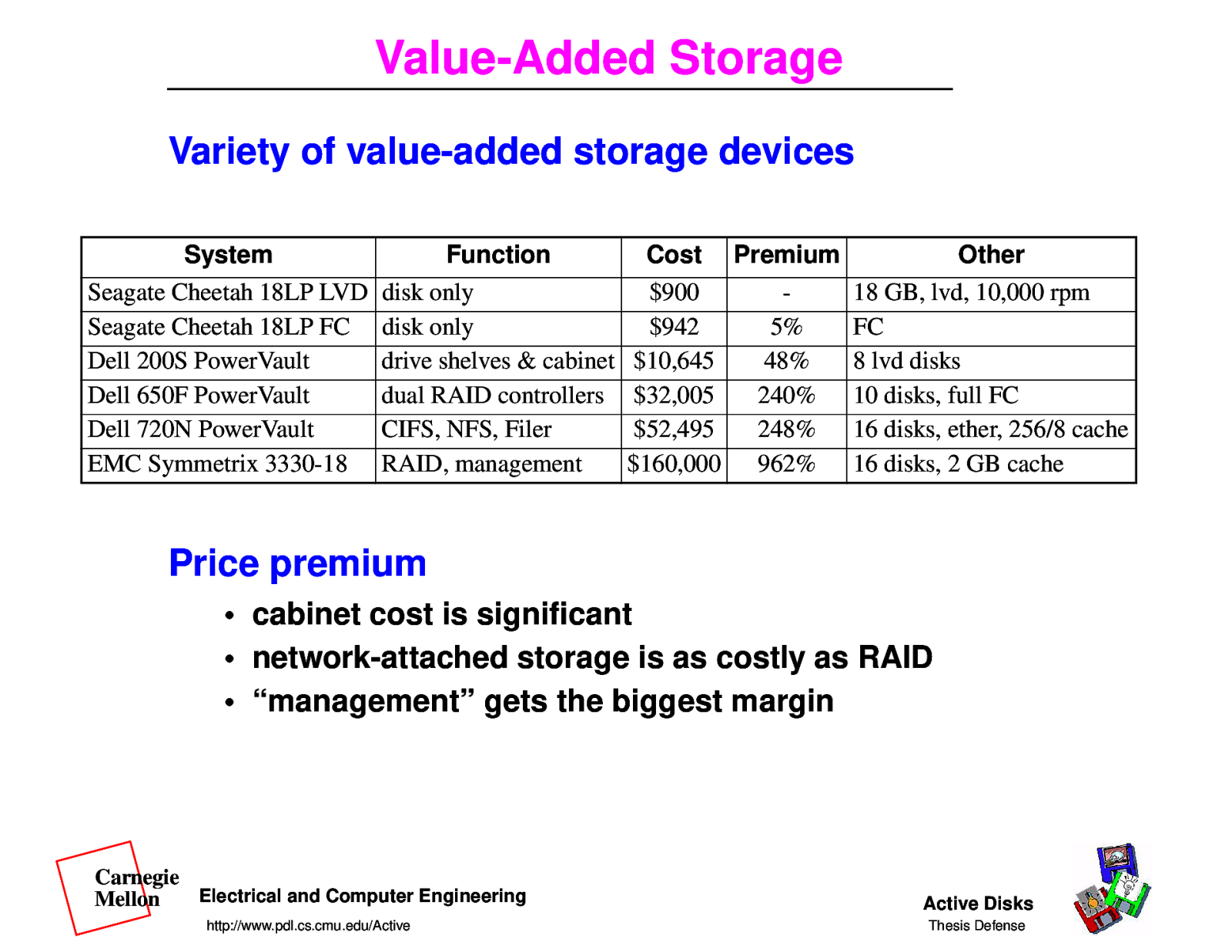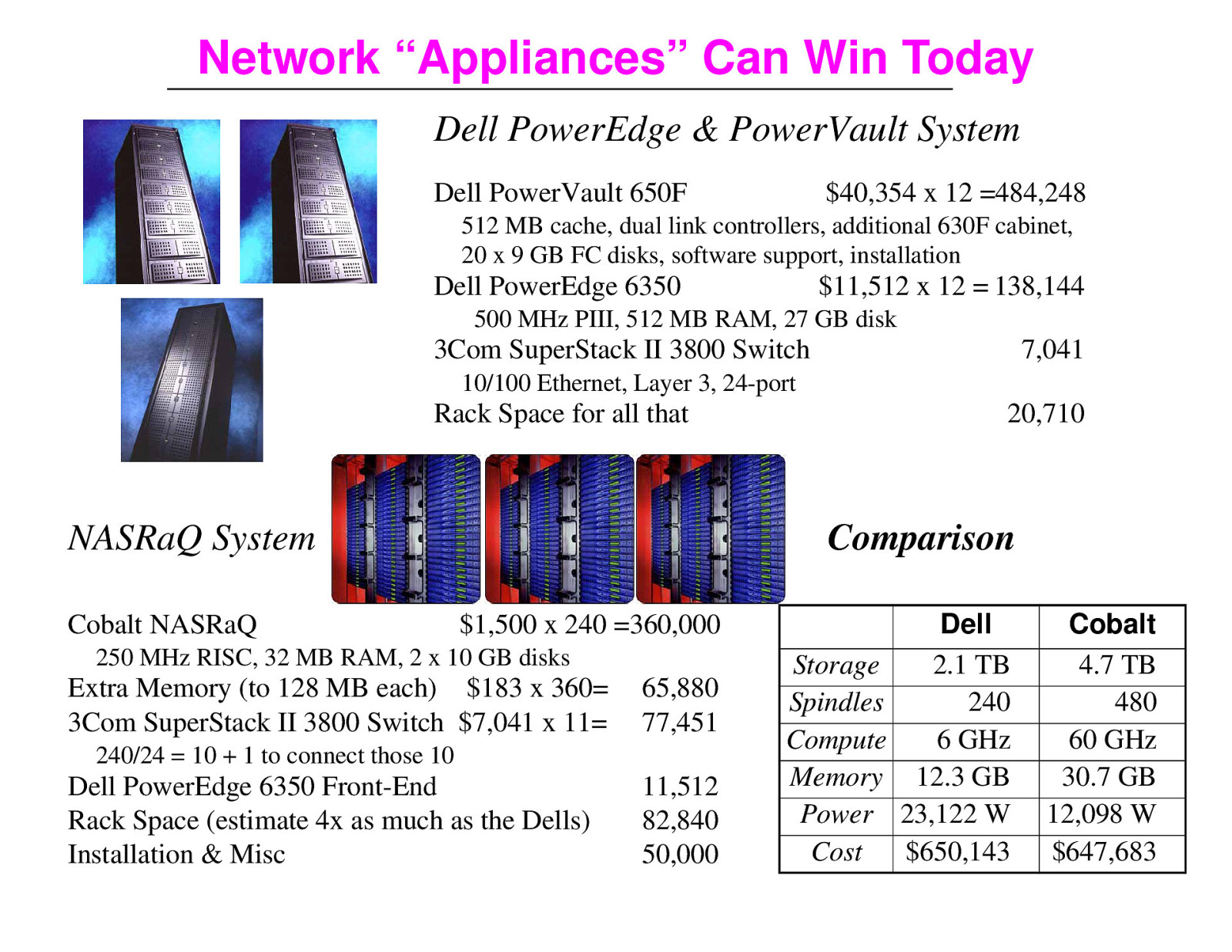Network “Appliances” Can Win Today Dell PowerEdge & PowerVault System Dell PowerVault 650F
$40,354 x 12 =484,248
512 MB cache, dual link controllers, additional 630F cabinet, 20 x 9 GB FC disks, software support, installation
Dell PowerEdge 6350
$11,512 x 12 = 138,144
500 MHz PIII, 512 MB RAM, 27 GB disk
3Com SuperStack II 3800 Switch
7,041
10/100 Ethernet, Layer 3, 24-port
Rack Space for all that
NASRaQ System Cobalt NASRaQ
20,710
Comparison $1,500 x 240 =360,000
250 MHz RISC, 32 MB RAM, 2 x 10 GB disks
Extra Memory (to 128 MB each) $183 x 360= 3Com SuperStack II 3800 Switch $7,041 x 11=
65,880 77,451
240/24 = 10 + 1 to connect those 10
Dell PowerEdge 6350 Front-End Rack Space (estimate 4x as much as the Dells) Installation & Misc
11,512 82,840 50,000
Storage Spindles Compute Memory Power Cost
Dell 2.1 TB 240 6 GHz 12.3 GB 23,122 W $650,143
Cobalt 4.7 TB 480 60 GHz 30.7 GB 12,098 W $647,683





















































































